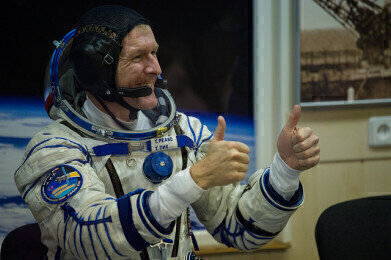News & Views
How Long Can an Astronaut Safely Stay in Space?
Mar 14 2016
Life in space has always fascinated earthlings, with blockbuster films such as The Martian only serving to fan the flames of curiosity. While Matt Damon did quite the job of making a life for himself on Mars, it did leave viewers wondering how long humans can actually survive in space.
Put simply, the answer is unclear. Technology is constantly evolving, and the number of days an astronaut can maintain a healthy ‘lifestyle’ in space is continually increasing.
Russia breaks records
To date, the longest continuous amount of time a human has spent in space is 437 days. This feat was lived out by Russian astronaut Valeri Polyakov. When it comes to total number of days spent in space, fellow Russian Sergei Krikalev takes the cake, with over 803 days in space, spread out over six flights.
The physical effects of space
So what makes it so difficult to survive in space? For starters, the human body has evolved to function under gravitational conditions. This means that space is a harsh condition for humans. As muscles constantly work against gravity on planet Earth, they start to deteriorate in space. This includes the heart, which shrinks.
As bones are no longer needed to support the body’s weight they neglect the need to maintain themselves. While bone tissue is still absorbed it’s not rebuilt, which can cause fractures and kidney stones. Research has also shown that extended periods in space can dysregulate the immune system, and leave astronauts vulnerable to pathogens, hypersensitivity and unwanted autoimmune responses.
The risk of radiation
Radiation is another serious threat, with astronauts continuously exposed to multiple forms of energy, including solar radiation, galactic cosmic radiation, geomagnetically bound radiation and solar cosmic particles. Overexposure can trigger serious cell mutation, leading to cancer, epigenetic effects and even death. Radiation can also impair bodily functions, causing bone marrow to deteriorate, the immune system to weaken and cataracts to develop in the eyes. Even with next generation shielding materials to protect them, astronauts are still at risk of secondary radiation from gamma rays and energetic neutrons.
While radiation can be a serious health problem, light also plays a major role in modern science. ‘Light Source Characterisation in Life Sciences’ explores photonics in further detail, and its role in a myriad of life science arenas, including biological research, biomedical instrumentation and agriculture. From effective UV disinfection and optimal aquarium illumination to accurate blood oximetry, success depends largely on the ability to understand the performance of certain light sources.
Image via Flickr Creative Commons. Photo credits: NASA HQ Photo
Digital Edition
International Labmate 49.6 - Sept 2024
September 2024
Chromatography Articles - HPLC gradient validation using non-invasive flowmeters Mass Spectrometry & Spectroscopy Articles - From R&D to QC, making NMR accessible for everyone: Putting NMR...
View all digital editions
Events
Oct 30 2024 Birmingham, UK
Oct 30 2024 Manchester, UK
Nov 11 2024 Dusseldorf, Germany
Nov 12 2024 Cologne, Germany
Nov 12 2024 Tel Aviv, Israel



.jpg)















